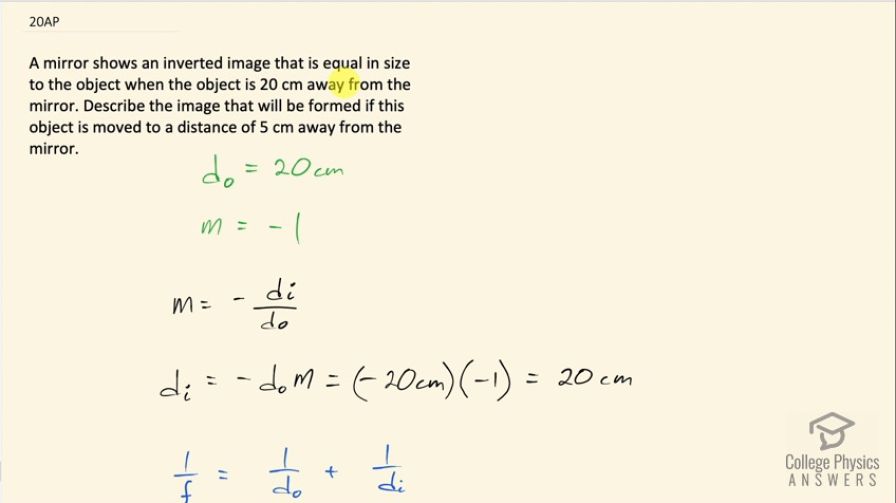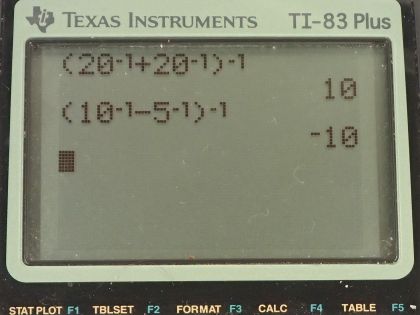Question
A mirror shows an inverted image that is equal in size to the object when the object is 20 cm away from the mirror. Describe the image that will be formed if this object is moved to a distance of 5 cm away from the mirror.
Final Answer
The image will be upright and twice as large.
Solution video
OpenStax College Physics for AP® Courses, Chapter 25, Problem 20 (Test Prep for AP® Courses)

vote with a rating of
votes with an average rating of
.
Calculator Screenshots
Video Transcript
This is College Physics Answers with Shaun Dychko. A mirror shows an inverted image that's equal in size to an object when the object is 20 centimeters away so we have to figure out what the image will look like when the object is 5 centimeters away? We will need to figure out what the focal length is of this mirror in order to figure out things about the image when the object is this far away. So originally the object distance is 20 centimeters and having an inverted image that's equal in size means the magnification is negative 1 the negative sign indicates inverted and 1 means the same size. Now magnification is negative of the image distance divided by the object distance and we can solve for image distance by multiplying both sides by negative d o and we have image distance is negative object distance times magnification that's negative 20 centimeters times negative 1, which is positive 20 centimeters. Then we use the thin lens equation and solve it for the focal length by raising both sides to the power of negative 1 and I like to write this fraction as d o to the negative 1 and this as d i to the negative 1— I find it easier to plug into my calculator this way. So we have 20 centimeters to the negative 1 plus 20 centimeters to the negative 1 all to the negative 1 which is the focal length of positive 10 centimeters. Then we are going to figure out the image distance in the new position of the object when it's only 5 centimeters away so we will call that new position d o prime and we have 1 over image distance prime equals 1 over f minus 1 over d o prime. So we raise both sides to this... to the exponent negative 1 and we have image distance in this new case is 1 over 10 centimeters minus 1 over 5 centimeters all to the negative 1 which is negative 10 centimeters and then we can calculate the new magnification— magnification prime in this case— is negative d i prime over d o prime and that's negative of negative 10 centimeters over 5 centimeters, which is positive 2; the positive means the image is upright and the 2 means it is twice as large.
